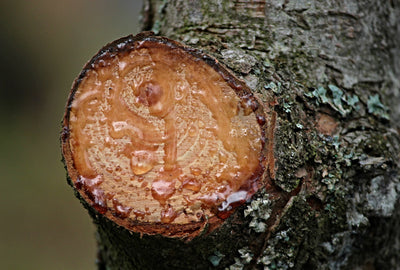Faux leather is a material that is becoming increasingly popular in the fashion, furniture and automotive industries. Often used as an economical alternative to genuine leather , it is typically easier to care for and available in a wider range of colors and patterns. In this material guide we will look at the different types of faux leather, their advantages and disadvantages, their uses and how to care for them. Also, we will discuss the eco-friendliness of faux leather.
What is faux leather? - a short explanation
Faux leather is a synthetic material made from various chemical compounds to mimic the look and feel of real leather. It is often made from polyurethane (PU) or polyvinyl chloride (PVC) and can also be made from other materials such as microfiber. Unlike genuine leather, faux leather is typically less expensive and easier to maintain, making it an attractive option for the fashion, furniture, and automotive industries.
What types of artificial leather are there?
There are different types of faux leather, differing in composition, texture, thickness and flexibility. Here are some of the most common types of faux leather:
- PVC Faux Leather: PVC (polyvinyl chloride) is one of the most commonly used materials for faux leather. It is typically less expensive than other types of faux leather and can be made in many colors and textures. However, PVC leather is often less breathable and less environmentally friendly than other types of synthetic leather.
- PU Faux Leather: PU (polyurethane) is another material commonly used for faux leather. It is softer and more flexible than PVC leather and feels more like real leather. PU leather is often more breathable than PVC leather and more environmentally friendly as it can be water-based.
- Microfiber Synthetic Leather: Microfiber leather is made up of small fibers that are assembled into a material that resembles real leather. It is typically softer and more breathable than PVC or PU leather and can be made in many colors and textures.
- Organic artificial leather: Organic leather is made from natural raw materials such as cork, pineapple fibers or mushrooms. It is a greener alternative to traditional faux leather and can boast similar durability.
- Mixed Materials: Some types of faux leather are made from a mixture of different materials, such as PVC and PU or PVC and polyester. These materials can have different properties and can be optimized for specific applications.
It is important to note that each type of faux leather has different advantages and disadvantages and may be better suited for different applications. Before you decide on a specific synthetic leather, you should carefully examine the properties of the material and the requirements of your application.
How is artificial leather made?
Faux leather is made using a combination of chemicals to mimic the look and feel of real leather. Manufacturing processes vary depending on the type of faux leather.
In the manufacture of polyurethane synthetic leather (PU synthetic leather), a liquid layer of polyurethane is applied to a textile backing and the surface is embossed and dyed to create a leather-like appearance.
In the manufacture of polyvinyl chloride synthetic leather (PVC synthetic leather), a layer of liquid PVC is applied to a textile backing and then heated to stabilize it. The material is then embossed and dyed to make it look like real leather.
Microfiber synthetic leather is made by weaving polyester or polyamide fibers to form a textile structure, which is then coated and dyed to make it look like real leather. Manufacturing synthetic leather requires a precise balance of chemicals and technologies to produce a high-quality material that meets the needs of each industry.
Some types of organic artificial leather are made from plant-based raw materials such as pineapple leaves, cork or corn waste. These materials are processed into a fiber which is then woven into a textile fabric. The textile fabric is then given a coating of natural resin, wax or oil to achieve desired properties such as flexibility and water resistance.
Another method of producing organic synthetic leather is the fermentation of fungal cultures. Here, fungal growth is encouraged in a special environment and then processed into a material that resembles leather. This material is biodegradable and can be recycled.
Pros and cons of faux leather
Faux leather offers a number of advantages over real leather. It is typically less expensive than genuine leather and allows the same look and feel to be achieved without stressing the animals. Faux leather is also easier to care for than real leather because it's less sensitive to moisture and stains, and doesn't crack or fade as easily.
Additionally, faux leather comes in a variety of colors and textures, making it an attractive option for fashion, furniture, and automotive manufacturers. Another benefit of faux leather is that it is often more durable than real leather as it is less prone to tearing and wear. Last but not least, faux leather also offers the opportunity to choose an environmentally conscious material that reduces the use of animal products while providing a quality alternative for leather lovers.
Benefits at a glance
- Cost: usually cheaper than real leather
- Animal friendly: no animal is needed for the production
- Easy care: less prone to staining, cracking and fading
- Variety: available in different colors and textures
- Lightweight: easier to carry and handle
Disadvantages of artificial leather
- Environmental Impact: The production of imitation leather generally requires more energy and raw materials than the production of real leather, resulting in a higher environmental impact.
- Texture and Appearance: Faux leather often cannot feel as soft and supple as real leather and can sometimes have an unnatural appearance.
- Odor: Faux leather can have a chemical odor, especially when new, which can be uncomfortable for some people.
It is important to consider that most of these disadvantages can vary depending on the type and quality of the faux leather.
Is faux leather sustainable?
Faux leather is often promoted as a sustainable alternative to real leather as it is made from synthetic materials and therefore contains no animal products. However, the sustainability of artificial leather is controversial . The production of artificial leather requires a lot of energy, and most types of artificial leather are made from petrochemical raw materials, which contributes to environmental pollution. In addition, artificial leather cannot be biodegraded after use and often ends up in landfills.
However, if faux leather is made from recycled materials or from natural raw materials such as cork or cork fabric or pineapple fibre, it can be a more sustainable alternative. However, it is important that the entire supply chain and lifecycle of synthetic leather is carefully considered to assess actual sustainability.
What are the uses for artificial leather?

Faux leather is a versatile alternative to real leather and can be used in many areas. It is commonly used on clothing such as jackets, pants, skirts, shoes, and accessories such as bags, belts, and purses. Furniture such as sofas, chairs, stools and cushions can also be made from imitation leather. Artificial leather is also used in the automotive industry for seats, steering wheels and dashboards.
In the outdoor area, artificial leather can serve as a water-repellent and robust material for backpacks, tents and tarpaulins. Because faux leather comes in many colors and textures, it can be used in many different styles, from classic to contemporary. However, it is important to note that different types of synthetic leather are suitable for different purposes, depending on their flexibility, water resistance and durability.
How do I properly care for artificial leather?
Here are some tips on how to properly care for your faux leather :
- Clean the faux leather regularly: Use a soft, damp cloth or sponge to remove dirt and dust from the faux leather. Do not use harsh cleaning agents that could damage the material.
- Avoid Heat and Sunlight: Faux leather can become brittle and brittle if exposed to too much heat or sunlight. Therefore, artificial leather should not be placed near heat sources such as radiators or windows.
- Use special care products: There are special care products for faux leather that will keep the material clean and preserve the texture. Make sure you're using a product that's appropriate for your specific faux leather.
- Treat stains immediately: If you notice a stain on the faux leather, wipe it off with a damp cloth as soon as possible.
- Faux leather can be easily scratched, especially when it comes into contact with sharp objects such as buckles or zippers. Therefore, avoid rubbing faux leather on rough surfaces and do not carry sharp objects near the faux leather.
With regular cleaning and careful care, imitation leather can last a long time and retain its beautiful appearance. If you are unsure how best to care for your imitation leather, it is advisable to read the instructions from the respective manufacturer.
How can artificial leather be processed?

Faux leather can be finished in a variety of ways, depending on the result you want to achieve. Here are some ways to work faux leather:
- Cutting: Faux leather can be cut with scissors or a sharp knife to shape it into the desired shape.
- Punching : Holes can be punched in the faux leather using a punch pliers or punch tool to decorate it or to prepare it for a specific application.
- Sewing : Faux leather can be sewn, just like real leather. Use a sewing machine with a leather or denim needle and set the stitch to a longer length so as not to damage the faux leather.
- Embossing : A pattern or design can be embossed into the faux leather using an embossing die or machine.
- Dyeing : Faux leather can be dyed with special dyes and dyes to give it a different color or to personalize it.
Cutting and engraving with a laser cutter : With our Mr Beam laser cutter you can not only engrave imitation leather, but also cut it. You can bring the imitation leather into the shape you want and then easily personalize it, such as this pendant with engraving.

Be careful when choosing imitation leather for laser cutting!
In any case, you must bear in mind that not every type of imitation leather may be lasered. Imitation leather containing chrome, neoprene (containing chlorine) and textiles containing PVC must not be processed with a laser cutter under any circumstances. Therefore, you should always use special laser imitation leather. You can get this laser imitation leather from many different dealers, including us in our online shop.
Conclusion on the artificial leather
In summary, faux leather offers a good alternative to real leather, especially when it comes to animal rights. It is usually less expensive than real leather and can also come in a variety of colors and textures.
However, it also has some disadvantages, depending on the type of artificial leather. The choice between genuine leather and faux leather comes down to personal preference, ethical considerations, and practical considerations. It's important to carefully weigh the pros and cons of faux leather to make an informed decision about whether faux leather is the right choice for you. If you choose faux leather , it's important to take proper care of the material to ensure it lasts and retains its appearance. In any case, always consider the individual application.



